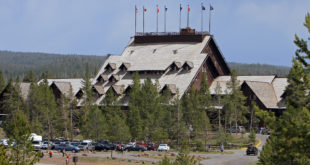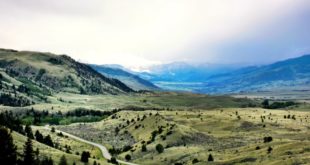Most people who come to Yellowstone are aware that it has a waterfall or two, at least the two mighty falls of the Yellowstone River. Actually Yellowstone has over 300 waterfalls, located all over the park. There are a dozen major waterfalls at or very near the highways of the park (see map), any one of which would be a major attraction in almost any other park.

All waterfalls are most spectacular at times of high water – usually spring, or after a prolonged wet spell. In Yellowstone, the runoff from melting snow normally provides the biggest volume of water for all the falls in the park. However, by July and August, when most people visit, the rivers – and falls – are decreasing in flow. Summer storms, even when numerous, are too scattered to affect the flow over most of the falls. By mid-summer most of the falls are still impressive, but nothing like they are in spring, and some are reduced to not more than thin sheets of water.
Not this year for most falls in Yellowstone. This year’s heavy snowpack in the mountains combined with a prolonged cool spring will produce robust water flow well into the mid-summer months. Waterfalls such as Undine Falls (pictured below) on the Mammoth to Tower-Roosevelt portion of the Grand Loop Road, which can turn into a mere trickle during dry summers, will remain near full throttle through at least July this year.
In short, it’s a great year to ‘tour the falls’ – visit each of the falls along the main highways.

Undine Falls – from parking area on the Grand Loop Road.
 Yellowstone Insider Your Complete Guide to America's First National Park
Yellowstone Insider Your Complete Guide to America's First National Park





